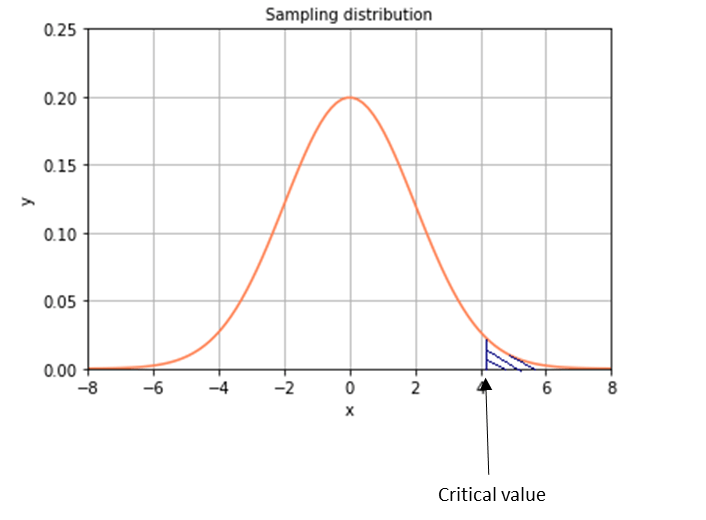What Is A Critical Value?
A critical value represents a line on a graph that splits it into two sections. Usually, one is considered as the “acceptance region” and the other as the “rejection region”. In hypothesis testing, this value denotes a threshold used to compare with the value of the test statistics (called p-value) to determine whether the null hypothesis is supported or not. When the sampling distribution is normal or nearly normal, the critical value can be considered as a t-score or as a z-score.

Figure 1: Critical value
In hypothesis testing, a critical value corresponds to the probability (α) of rejecting the null hypothesis (H0) when H0 is true. Its value is chosen according to the experiment’s conditions. A common choice is 0.05 or 5% because it represents an acceptable margin of error in business and engineering alike. Once selected, the critical value is compared with the test statistics. If the test statistic is greater than the critical value, the null hypothesis can be rejected. Moreover, depending on the case, there can be more than one critical value.
Why Are Critical Values Essential?
Critical values are a very important statistical tool, as they define the acceptance level in a statistical test. In general, they are used to evaluate the degree of evidence from a sample, which gives an indication of how reliable extrapolations from it to the entire population can be.
Critical Values and LogicPlum
Critical values are a key element in hypothesis testing. However, hypothesis testing requires an understanding of statistics that not every researcher or analyst has.
This problem is solved for the user by LogicPlum’s automated approach, which leaves the selection of a critical value and hypothesis testing process to the platform, without requiring any human intervention.
This feature permits users to train and test hundreds of potential models and to select the optimal one in a short time, without the need for expert-level statistical or mathematical knowledge. As a consequence, modeling can become a team task, where all stakeholders participate and contribute according to their level and areas of expertise.








